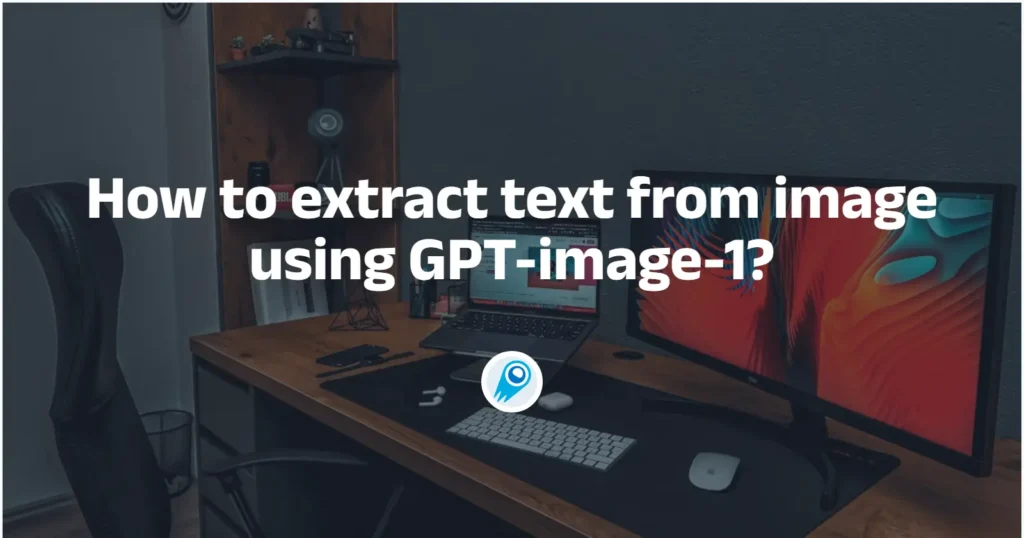How to Extract Text from Image Using GPT-image-1?

In recent weeks, OpenAI’s release of the GPT-image-1 model has catalyzed rapid innovation across the AI landscape, empowering developers and creators with unprecedented multimodal capabilities. From broad API availability to integrations with leading design platforms, the buzz around GPT-image-1 underscores its dual prowess in image generation and, crucially, in extracting text from within images. This article synthesizes the latest developments and presents a comprehensive, step-by-step guide on how to leverage GPT-image-1 for accurate text extraction.
What is GPT-image-1 and what recent advancements have been announced?
GPT-image-1, the newest addition to OpenAI’s multimodal toolkit, combines powerful image generation with advanced text recognition, effectively blurring the line between OCR and creative AI. OpenAI officially launched GPT-image-1 via its Images API on April 23, 2025, granting developers global access to the same model that powers ChatGPT’s in-chat image features . Shortly thereafter, integration partnerships were unveiled with Adobe and Figma, enabling designers to invoke GPT-image-1’s capabilities directly within Firefly, Express, and Figma Design environments.
How is the API rollout structured?
The Images API endpoint supports image generation requests immediately, while text‐oriented queries—such as extracting textual content—are facilitated through the forthcoming Responses API. Organizations must verify their OpenAI settings to gain access, and early adopters can expect playground and SDK support “coming soon” .
Which platforms are already integrating GPT-image-1?
- Adobe Firefly & Express: Creators can now generate new visuals or extract embedded text on demand, streamlining workflows for marketing and publishing teams.
- Figma Design: UX/UI professionals can prompt GPT-image-1 to isolate text layers from complex mockups, accelerating prototyping and localization efforts .
How can you extract text from an image using GPT-image-1?
Harnessing GPT-image-1 for text extraction involves a series of well-defined steps: from environment setup to result refinement. The model’s inherent understanding of visual context allows it to accurately parse fonts, layouts, and even stylized text—far beyond traditional OCR.
What prerequisites are required?
- API Key & Access: Ensure you have an OpenAI API key with Images API permissions (verify via your org settings) .
- Development Environment: Install the OpenAI SDK for your preferred language (e.g.,
pip install openai) and configure your environment variables for secure key management.
Or you can also consider using CometAPI access, which is suitable for multiple programming languages and easy to integrate, see GPT-image-1 API .
What does a basic extraction request look like?
In Python, a minimal request might resemble (use GPT-image-1 API in CometAPI):
import requests
import json
url = "https://api.cometapi.com/v1/images/generations"
payload = json.dumps({
"model": "gpt-image-1",
"prompt": "A cute baby sea otter",
"n": 1, "size": "1024x1024"
})
headers = {
'Authorization': 'Bearer {{api-key}}',
'Content-Type': 'application/json'
}
response = requests.request("POST", url, headers=headers, data=payload)
print(response.text)
This call directs GPT-image-1 to process invoice.jpg and return all detected text, leveraging its zero-shot understanding of document layouts .
What strategies improve extraction accuracy?
While GPT-image1 is remarkably capable out-of-the-box, applying domain-specific optimizations can yield higher precision—especially in challenging scenarios like low contrast, handwriting, or multilingual content.
How can you handle diverse languages and scripts?
Specify a secondary prompt that contextualizes the target language. For example:
response = requests.Image.create(
model="gpt-image-1",
purpose="extract_text",
image=open("cyrillic_sign.jpg", "rb"),
prompt="Extract all Russian text from this image."
)
This prompt steering guides the model to focus on the Cyrillic script, reducing false positives from decorative elements.
How do you deal with noisy or low-quality inputs?
- Preprocessing: Apply basic image enhancements (contrast adjustment, denoising) before submitting to the API.
- Iterative Refinement: Use chaining—submit an initial extraction, then feed ambiguous regions back with higher resolution crops.
- Prompt Clarification: If certain areas remain unclear, issue targeted follow-up prompts such as “Only return text in the highlighted region between coordinates (x1,y1) and (x2,y2).”
What architectural considerations optimize performance and cost?
With growing adoption comes the need to balance throughput, latency, and budget. GPT-image-1 pricing is roughly $0.20 per image processed, making bulk or high-resolution workflows potentially expensive .
How can you batch requests effectively?
- Use concurrent API requests with rate-limit awareness.
- Aggregate multiple images into a single multipart request, where supported.
- Cache results for repeat processing of unchanged images.
What monitoring and error handling patterns are recommended?
Implement retries with exponential backoff for transient errors (HTTP 429/500), and log both success metrics (characters extracted) and failure contexts (error codes, image metadata) to identify problematic image types.
What are the broader implications and future outlook for text extraction?
The convergence of image generation and text recognition in GPT-image-1 paves the way for unified multimodal applications—ranging from automated data entry and compliance auditing to real-time augmented reality translation.
How does this compare to traditional OCR?
Unlike rule-based OCR engines, it excels at interpreting stylized fonts, contextual annotations, and even handwritten notes, thanks to its training on vast, diverse image–text pairings .
What upcoming enhancements can we anticipate?
- Responses API Support: Allowing richer, conversational interactions with extracted content (e.g., “Summarize the text you just read.”) .
- Fine-Tuning Capabilities: Enabling vertical-specific OCR fine-tuning (e.g., medical prescriptions, legal documents).
- On-Device Models: Lightweight variants for offline, privacy-sensitive deployments in mobile and edge devices.
Through strategic API usage, prompt engineering, and best-practice optimizations, GPT-image-1 unlocks rapid, reliable text extraction from images—ushering in a new era of multimodal AI applications. Whether you’re digitizing legacy archives or building next-generation AR translators, the flexibility and accuracy of GPT-image-1 make it a cornerstone technology for any text-centric workflow.
Getting Started
Developers can access GPT-image-1 API through CometAPI. To begin, explore the model’s capabilities in the Playground and consult the API guide (model name: gpt-image-1) for detailed instructions. Note that some developers may need to verify their organization before using the model.


